Mastering forex volatility with standard deviation involves leveraging this statistical tool to measure and analyze price fluctuations in currency pairs. Standard deviation provides valuable insights into market uncertainty, highlighting potential trend reversals that can have a notable impact on trading decisions. By understanding the variability of price movements and evaluating volatility levels effectively, traders can enhance their decision-making processes and improve overall trading performance. Utilizing standard deviation in trading strategies not only helps in identifying trend reversals early but also enhances risk management practices. Implementing this technique alongside other indicators can lead to thorough trade signals and refined analysis for more effective trading strategies.
Understanding Standard Deviation in Forex
Understanding standard deviation in forex is essential for traders seeking to gauge the level of price variability and associated risks in currency markets. Standard deviation measures the dispersion of price values around the mean, providing insights into the volatility of currency pairs. High standard deviation in forex signifies greater price fluctuations and market uncertainty, which can impact trading decisions. Traders utilize standard deviation to analyze historical price movements, identify potential trend reversals, and anticipate future volatility in forex trading.
Incorporating tools like Bollinger Bands, which consist of a simple moving average and two standard deviations plotted around it, traders can visually assess price changes and potential breakouts. By understanding standard deviation returns, traders can employ effective risk management strategies to mitigate potential losses and optimize their trading performance. Measuring volatility through standard deviation enables traders to make informed decisions, adapt to market conditions, and enhance their overall trading strategies in the dynamic forex market.
Calculating Volatility With Standard Deviation
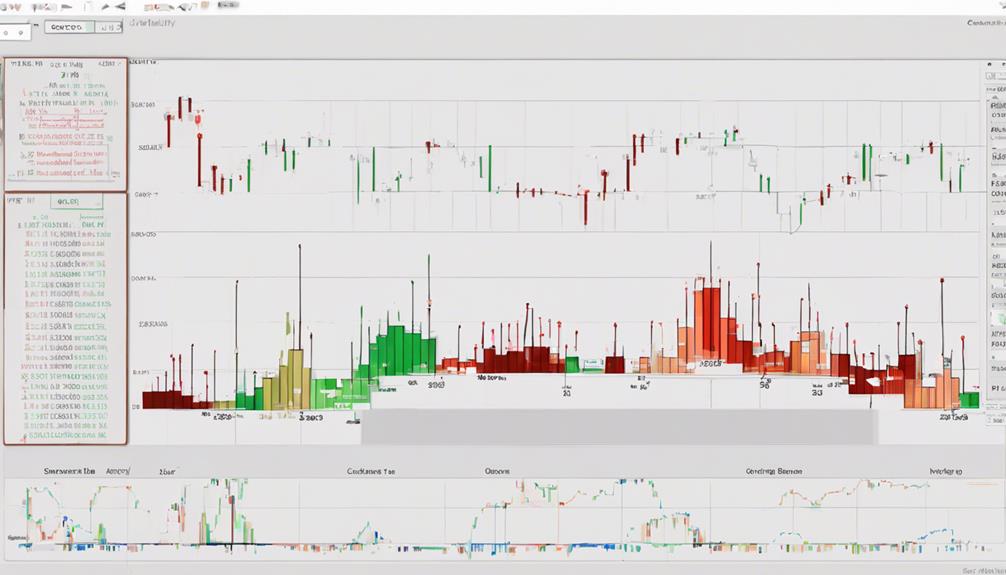
When evaluating volatility in forex markets, calculating standard deviation serves as an essential method for quantifying price fluctuations. To calculate standard deviation in forex trading, one must first gather historical price data.
By finding the mean of price changes and determining deviations from this mean, traders can assess the variability of price movements. The process involves squaring each deviation, summing the squared values, dividing by the number of periods, and finally taking the square root to obtain the standard deviation.
This statistical measure is vital for understanding the level of volatility in the market, enabling traders to make informed decisions and manage risks effectively.
Implementing Standard Deviation in Trading Strategies
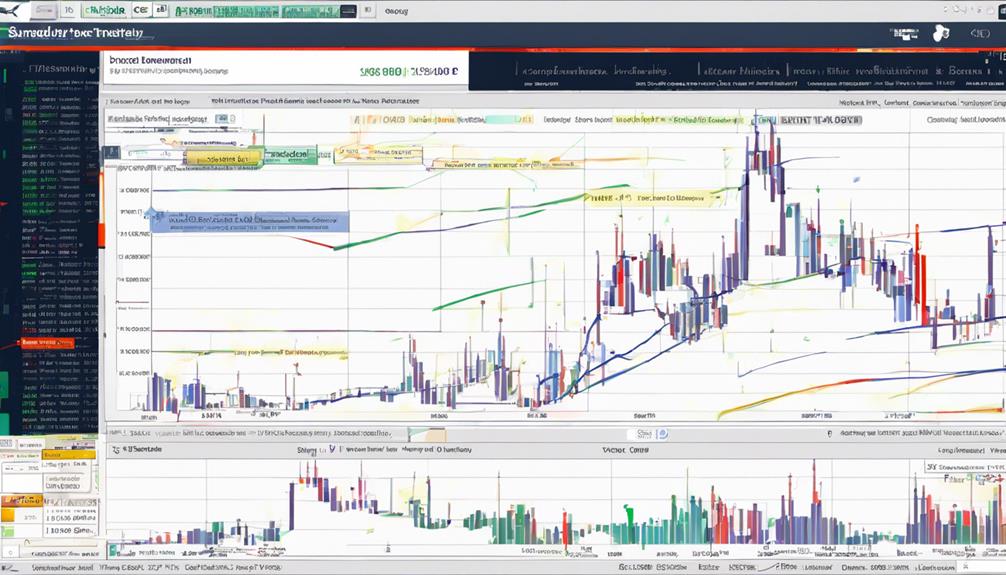
Utilizing Standard Deviation in trading strategies provides traders with a valuable tool for identifying potential trend reversals and evaluating market volatility levels effectively. When implementing Standard Deviation in trading strategies, traders can leverage its power in various ways:
- Identifying Trend Reversals: Standard Deviation helps traders spot potential trend reversals early on, allowing for timely adjustments to trading positions.
- Assessing Volatility Levels: High Standard Deviation values can indicate a market with increased volatility, signaling potential trading opportunities. On the other hand, low Standard Deviation values may suggest a market with reduced volatility, indicating a period of consolidation or smooth price movements.
- Combining with Other Indicators: Traders often combine Standard Deviation with other technical analysis indicators such as Average True Range (ATR) and Fibonacci levels to enhance their trading strategies. This integration can provide thorough insights for trade entry and exit signals, improving overall decision-making processes.
Using Standard Deviation for Risk Management
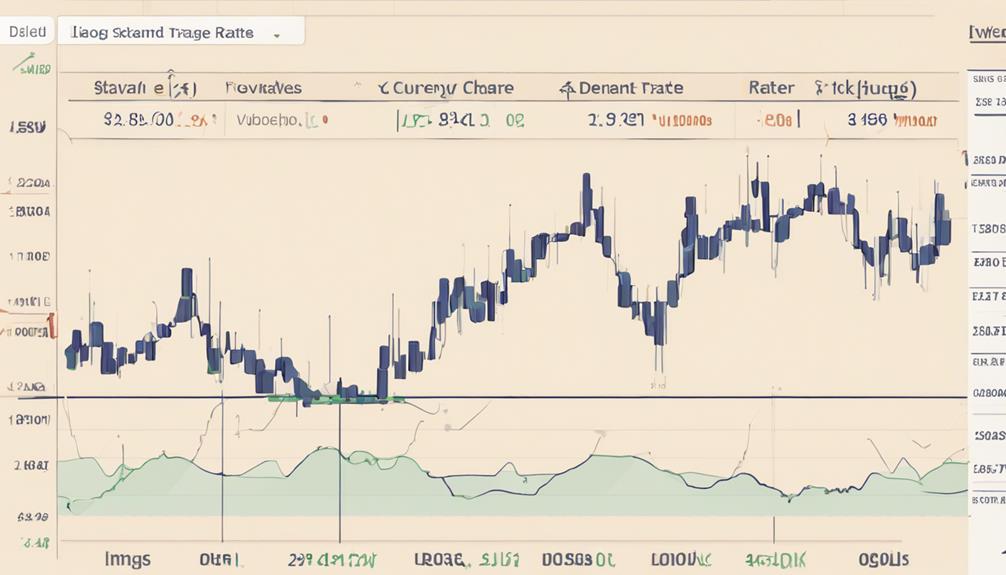
Standard deviation serves as an important tool for evaluating and managing risk in forex trading.
It enables traders to accurately measure the historical volatility of currency pairs, evaluate the impact of volatility on their trades, and adjust their trade sizes accordingly.
Incorporating standard deviation into risk management practices enhances traders' ability to make informed decisions and optimize their trading performance in the dynamic forex market.
Risk Measurement Accuracy
For traders seeking enhanced risk measurement accuracy in the volatile forex market, leveraging standard deviation as a key tool is imperative to quantifying price variability effectively.
- The standard deviation indicator helps calculate the standard deviation of price deviation.
- It enables traders to measure risk by considering the number of standard deviations from the mean price.
- Utilizing standard deviation enhances risk measurement accuracy, leading to improved trading efficiency and better protection against potential losses.
Volatility Impact Assessment
Evaluating the impact of volatility on risk management in the forex market involves utilizing standard deviation as an essential tool to measure price variability accurately. Traders rely on standard deviation for analysis, as it quantifies the level of risk associated with market fluctuations.
Higher standard deviation values indicate increased risk and volatility, prompting traders to adjust their risk management strategies accordingly. By incorporating standard deviation analysis, traders can make informed decisions regarding position sizing and setting appropriate stop-loss levels to mitigate potential losses.
This statistical tool not only helps in evaluating the impact of volatility but also aids in managing risks effectively when trading in unpredictable and volatile forex markets.
Trade Size Adjustment
Analyzing market volatility through trade size adjustment based on standard deviation is a strategic approach in managing risk effectively in forex trading.
When implementing trade size adjustments using standard deviation, consider the following:
- Use standard deviation to determine the appropriate level of position sizing.
- Higher standard deviation may require smaller trade sizes to accommodate increased volatility.
- Lower standard deviation allows for larger trade sizes with reduced risk exposure.
Enhancing Trading Decisions With Standard Deviation
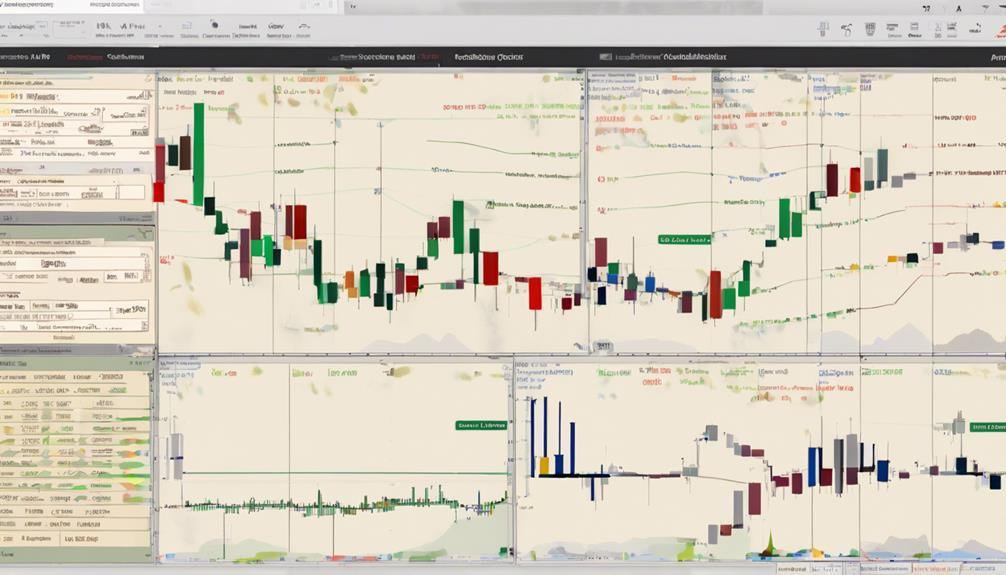
Utilizing standard deviation as a metric in forex trading can greatly enhance traders' risk management capabilities and decision-making processes. By incorporating standard deviation alongside price action analysis, traders can effectively assess market volatility and make informed trading decisions. Standard deviation serves as a valuable tool for identifying potential trend reversals and understanding market fluctuations. When used in conjunction with other technical indicators, standard deviation can provide confirmation signals for trade entries and exits.
Monitoring standard deviation levels can help traders adjust their risk management strategies accordingly, ensuring that they are well-prepared for changing market conditions. Integrating standard deviation into trading approaches allows traders to gauge the magnitude of price changes, thereby enabling them to capitalize on opportunities presented by varying levels of volatility. Ultimately, the inclusion of standard deviation in trading decisions equips traders with the necessary insights to navigate the forex market successfully and optimize their trading outcomes.
Advanced Applications of Standard Deviation
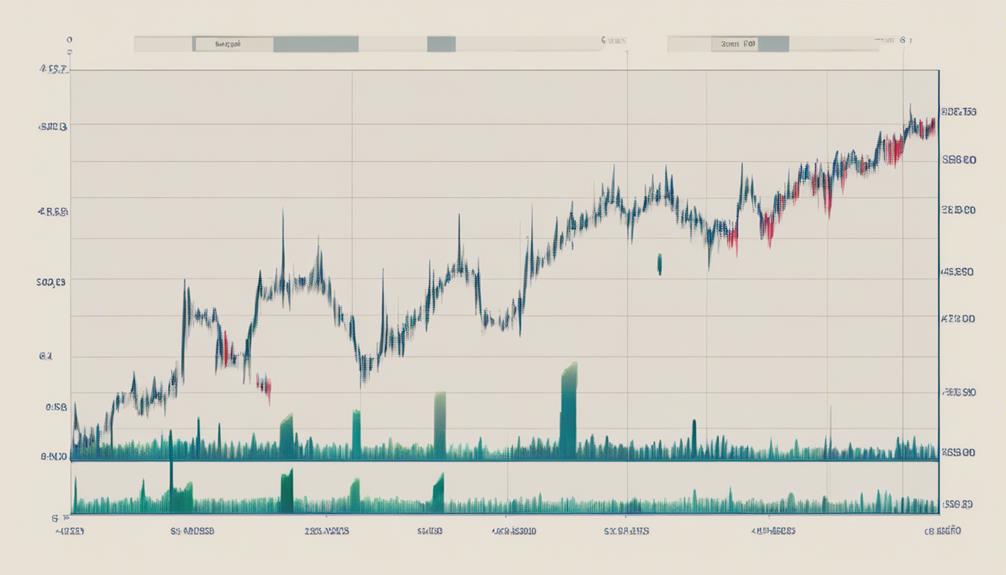
Incorporating advanced applications of Standard Deviation in forex trading strategies enhances traders' ability to capitalize on volatility patterns and trend analysis effectively. By delving into the depths of this statistical tool, traders can reveal a plethora of opportunities for refining their trading decisions.
Here are three key ways in which advanced applications of Standard Deviation can revolutionize trading strategies:
- Identifying Trend Reversals: Utilizing Standard Deviation to analyze the magnitude of price fluctuations can offer insights into potential trend reversals. High standard deviation values often signal a forthcoming trend reversal or a period of sideways price movement.
- Combining with Other Tools: Traders frequently combine the Standard Deviation indicator with other technical tools such as Average True Range (ATR) and Fibonacci levels to generate comprehensive trade signals. This integration enhances the overall effectiveness of the analysis, providing a more holistic view of the market dynamics.
- Developing Holistic Trading Strategies: Advanced applications of Standard Deviation involve developing trading strategies centered around volatility patterns and trend analysis. By incorporating Standard Deviation into their strategies, traders can create more robust approaches to understanding the complexities of the forex market.
Frequently Asked Questions
How to Get Volatility From Standard Deviation?
Calculating volatility from standard deviation involves measuring the dispersion of price data around the moving average. By understanding market fluctuations through statistical measures like standard deviation, traders can analyze price movements, implement risk management strategies, identify trading opportunities, and adjust their trading strategies accordingly.
Monitoring market conditions and interpreting standard deviation values aid in anticipating potential price fluctuations and making informed decisions based on market volatility levels.
How to Trade Forex With Standard Deviation?
Trading forex with standard deviation involves using it as a compass in the turbulent seas of the market. By incorporating this statistical measure into trading strategies, traders can better manage risk, analyze market movements, identify trends, determine entry and exit points, and optimize position sizing.
Leveraging standard deviation alongside technical analysis can refine decision-making processes, providing a data-driven approach to maneuvering the complexities of forex trading.
Does High Standard Deviation Mean High Volatility?
High standard deviation does indicate high volatility in trading.
This relationship is based on historical data analysis, showing that greater variability in prices signifies increased market volatility and potential price fluctuations.
Traders use this information to assess and manage risk in their strategies, as high standard deviation levels often coincide with periods of market uncertainty.
Understanding this statistical significance is essential for developing effective trading strategies and maximizing profits in dynamic market trends.
Is Standard Deviation Same as Implied Volatility?
Standard deviation and implied volatility are distinct concepts in the domain of financial analysis. Standard deviation is a statistical measure that analyzes historical data to gauge price variability.
Implied volatility, on the other hand, reflects market expectations of future price fluctuations derived from options pricing.
While both metrics relate to volatility, standard deviation focuses on past market trends and statistical analysis.
Implied volatility is forward-looking and aids in pricing options, risk assessment, and trading strategies.
Conclusion
In summary, mastering forex volatility with standard deviation is essential for understanding market fluctuations, calculating risk, and implementing effective trading strategies.
By utilizing standard deviation in trading decisions and risk management practices, traders can enhance their overall performance and optimize their profitability.
Additionally, advanced applications of standard deviation can provide valuable insights into market trends and potential opportunities for success in the forex market.
